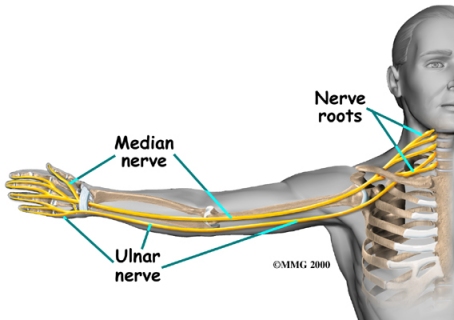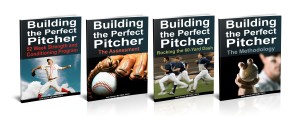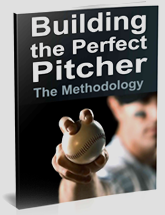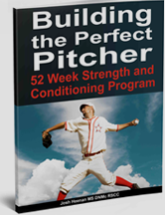Should You Use Ice, Aleve, or Ibuprofen After You Throw?

Ice, Aleve, or Ibuprofen plays an integral role in most pitchers’ post-outing routines. But why?
When I evaluate a new client, parents often rave about their son’s “post-game ritual” of icing right away and popping two Aleve. When I ask why they are using ice and anti-inflammatories, they always give the same answer: to stop inflammation and help recover. Yikes! There are many problems with this routine.
Problem #1 – Pain
A pitcher should not have elbow or shoulder pain post game or the day after. Muscle soreness in the upper back, rotator cuff, and deltoid is normal after an intense outing, but pain is a big no-no.
Ice, Aleve, and Ibuprofen all have analgesic or pain relieving properties. So, if a pitcher is using these modalities on a regular basis, we have no idea how their body is actually responding to throwing because the pain is masked. Being in touch with how the body feels allows us to monitor injury risks factors such as mechanical flaws, excess volume in sport or training volume, and potential sickness that may be exacerbated by lack of recovery.
Problem #2 – Delayed Recovery
Every musculoskeletal injury goes through 3 stages of recovery:
-
Inflammation
-
Repair
-
Remodeling
The following video by Kelly Starrett discusses how reducing inflammation is the wrong approach for recovery. If pressed for time start watching at 4 minutes. Don’t get bogged down by the sciency nature of the information. This is a must watch for athletes, coaches, and parents.
Problem #3 – Ulnar Nerve
The Ulnar Nerve is often the source of pain for athletes and non-athletes alike. Much of this can be attributed to neck pathologies and poor posture, but one thing is for sure, if you throw ice directly on the elbow about half the athletes will say it makes them feel better and the other half say it’s the most painful thing they have ever experienced.
Ulnar Nerve Transposition surgeries are common when conservative treatments no longer work and the patient experiences continual radiating pain, or pins needles with hand weakness. This portion of the elbow can be very finicky and painful, thus why I see no need to place ice directly on the elbow post throwing.
Problem #4 – Gut Health and Ulcers
Gut bacteria play an essential role in a normal digestive tract. NSAIDS can damage the mucous coating that protects the lining of the stomach. Once these bacteria damage the stomach lining, powerful stomach acid may irritate or destroy portions of the stomach. This is where ulcers often form.
Stomach ulcers can lead to excessive gas, bloating, pain or more sever issues of bleeding ulcers and cancer.
So, some changes need to be made in the common post-game routine of pitchers. Instead of settling for the conventional use of Ice, Ibuprofen, or Aleve, pitchers should follow these steps to improve recovery time and arm health:
A New Post Throwing Routine
-
Restorative Movement/Increased Blood Flow Right After Outing-
Full Body Active Warm-up -
Restorative Nutrition-
PN Injury Guide -
Restorative Sleep-
7-10 Hours of Deep Sleep -
Restorative Movement/Increased Blood Flow Next Morning-
Full Body Active Warm-up
This model of recovery is what I recommend to our pitchers and athletes who feel they need to improve their recovery techniques post game.
Notes:
-Ice and NSAIDS are not inherently bad. Instead, their application is often incorrect, as they have more applicability in a post surgical setting.
-Pain and/or swelling after throwing is not normal and should be a huge red flag that something is not right. When pain or swelling is evident seek a medical professional to evaluate the issue. Common causes are overuse, poor pitching mechanics, or orthopedic/movement/strength limitations at the ankle, hip, spine, shoulder, or elbow.
Want to take the guess work out of your in-season and off-season programming?
Check out my customized year long training program Building the Perfect Pitcher.













Jim Davila 1:43 am on November 4, 2014
What is the best recovery program for a pitcher throwing 60 or more pitches a game?If not using ice to slow the healing process,is heat good more increased circulation,or jogging to start the healing process,then arm band stretching days there after? Jim Davila
Josh Heenan 2:05 pm on November 4, 2014
Jim,
Thanks for the questions. Restoring mobility through an active circuit (like this one http://joshheenan.com/wp-content/uploads/2014/11/Movement-Based-Warm-up.pdf) will also increase blood flow throughout the body helping to provide nutrients to the used tissues.
Jogging is a waste of time IMO and research is clear that it can zap power. http://joshheenan.com/how-to-properly-condition-a-pitcher/
We have had great success with the protocol listed in the article for years now, give it a try.
Rich Bradley 3:26 pm on November 10, 2014
This was very informative. My company distributes Lymphedema pumps for Circulatory and Lymphatic problems, and I have always said that I think using a Lymphedema pump post pitching would have great benefits. Triathletes use them after running long distances and I think that Pitchers would also benefit using them after pitching. A pneumatic pump helps elicit a muscle contraction that would help move that fluid. Your thoughts?
Josh Heenan 6:57 pm on November 11, 2014
Rich,
Thanks for the message. I think that would be an exceptional use for your product. Feel free to shoot me an email for more info.
Stanley Beekman 3:48 am on February 19, 2015
Really enjoyed this as it put a lot of things together for me.
The first article I read relating to the was McMaster’s article on ankle sprains of over 1000 army recruits.
He used Novocaine and ace bandages as opposed to immobilization. The Novocaine and ace bandage group returned to active duty quicker.
jack 1:00 am on June 10, 2015
my son has shoulder tightness up to 3 days after he pitches,is this normal
Josh Heenan 3:08 pm on June 17, 2015
No!
I would get him check out ASAP.
Catherine Cox 6:56 pm on March 27, 2016
How long should a pitcher wait to get the most benefit from post-performance massage?
Josh Heenan 11:34 pm on March 29, 2016
It depends on the athlete, but usually we try to get our guys worked on right after an outing or the day after.